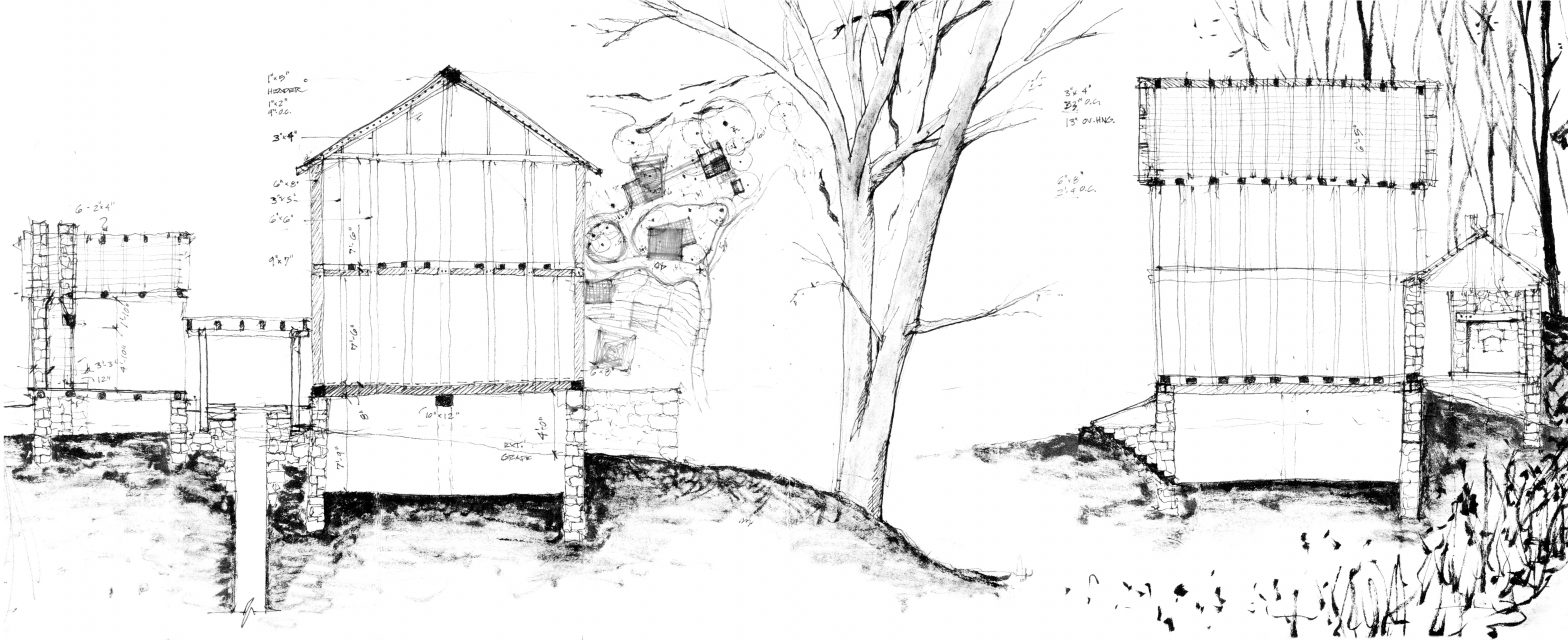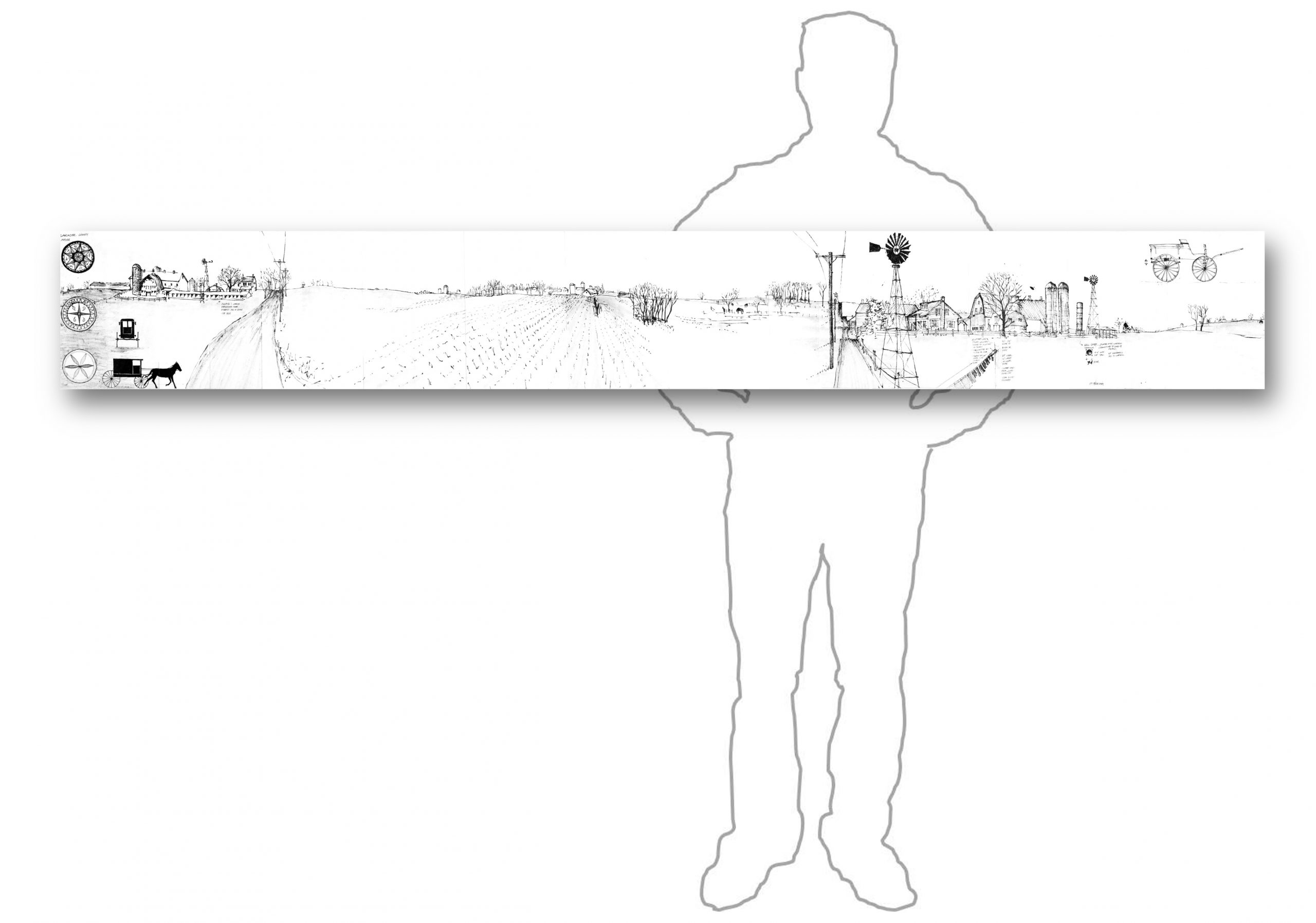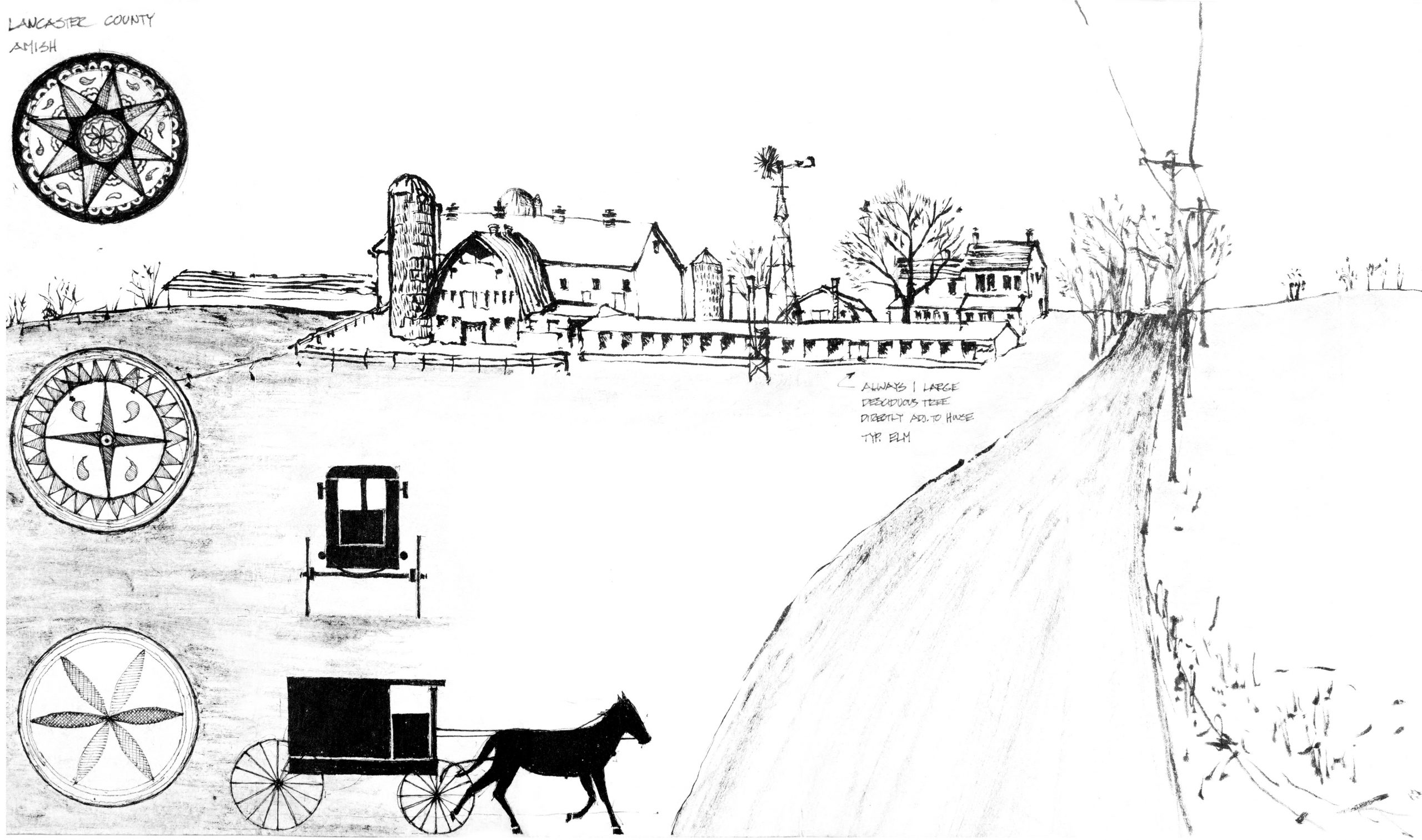7.14.USA-4-detail-b Highlights Relevant to Sustainable Design:
Trees count.
Drawing the house and its relation to its immediate environment took much longer than I expected. Identifying the location of the trees rather than cutting them down is the first step toward a respect for the natural context. Siting the trees is time-consuming, and I understand why builders and developers often just cut down all the trees and start from scratch. They do not want to spend time trying to figure out how to work with existing trees and topography. Since the developers make their money selling houses and they do not have to pay the utility bills over the life of each home’s occupancy, they are not motivated to build energy-smart houses. When the market starts to ask for smarter homes, the builders may step up to orient the homes to the sun, build calculated overhangs, and leverage the advantages of the existing trees for shading.
Here is some added information on trees for shading from 7.3.USA-1-detail-b:

We can rethink site selection and natural shading assets.
Developers could stop cutting down the trees on the subdivision lots. Use the deciduous trees on the south side of the houses. Design the site plan by putting the houses to the north of the larger trees. Each major deciduous tree is worth about $60,000 if you had to make a towering machine to shade your house in the summer and collapse it in the winter to let the desirable warmth of the sun heat the home. Saving trees saves energy.
Author and illustrator: Charlie Szoradi is an architect, inventor, and the CEO of Independence LED Lighting. He writes about many other topics related to trees for shading through his extensive travels around the world.
If you have found this posting online, it is an excerpt from Mr. Szoradi’s book Learn from Looking that served as the inspiring seed content for this drawing share resource. For additional drawings and insights on trees for shading and smart homes, we hope that you enjoy exploring LearnfromLooking.com. You can search via general terms such as sustainability as well as narrower terms such as trees for shading and energy-smart houses.



